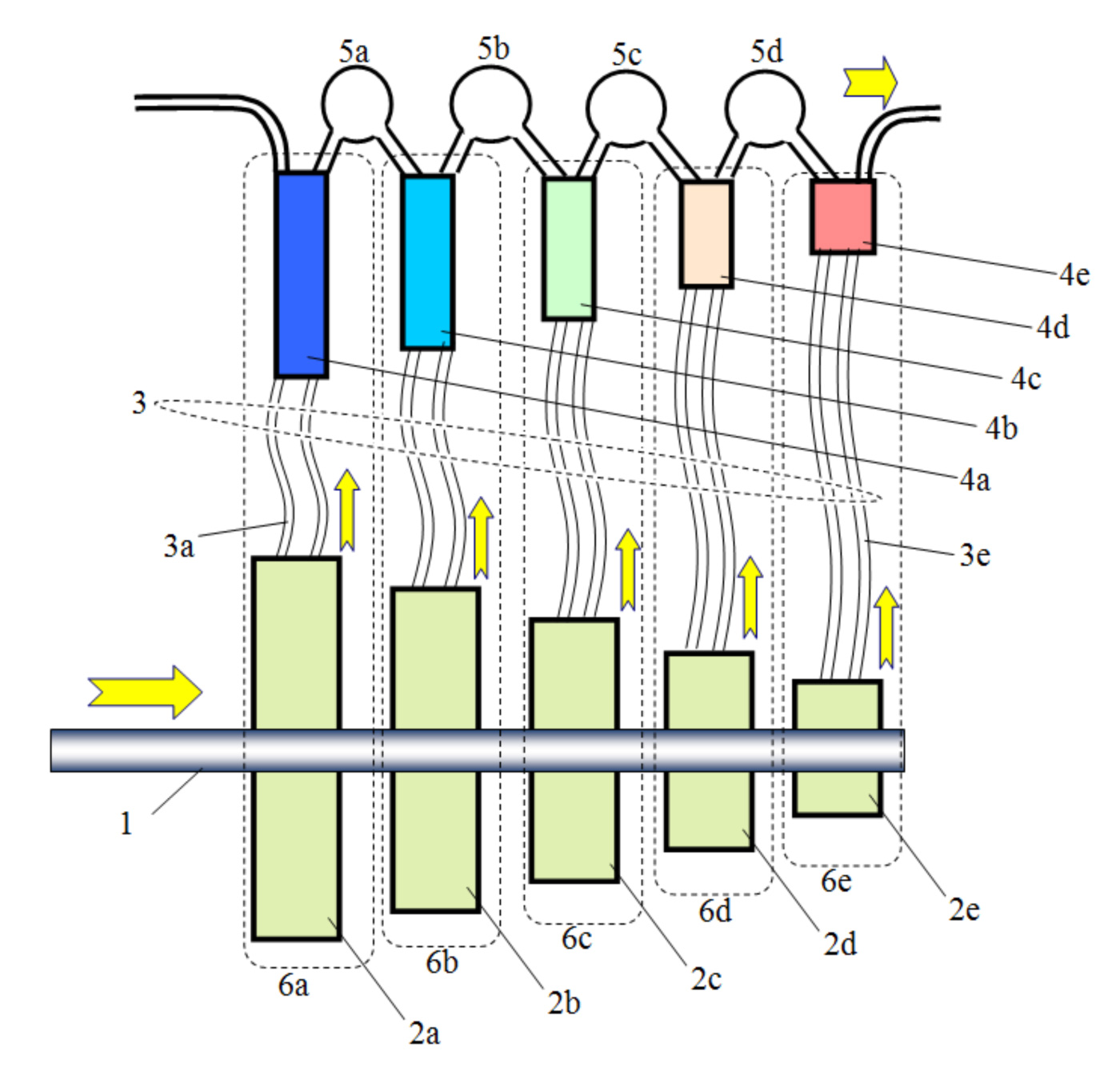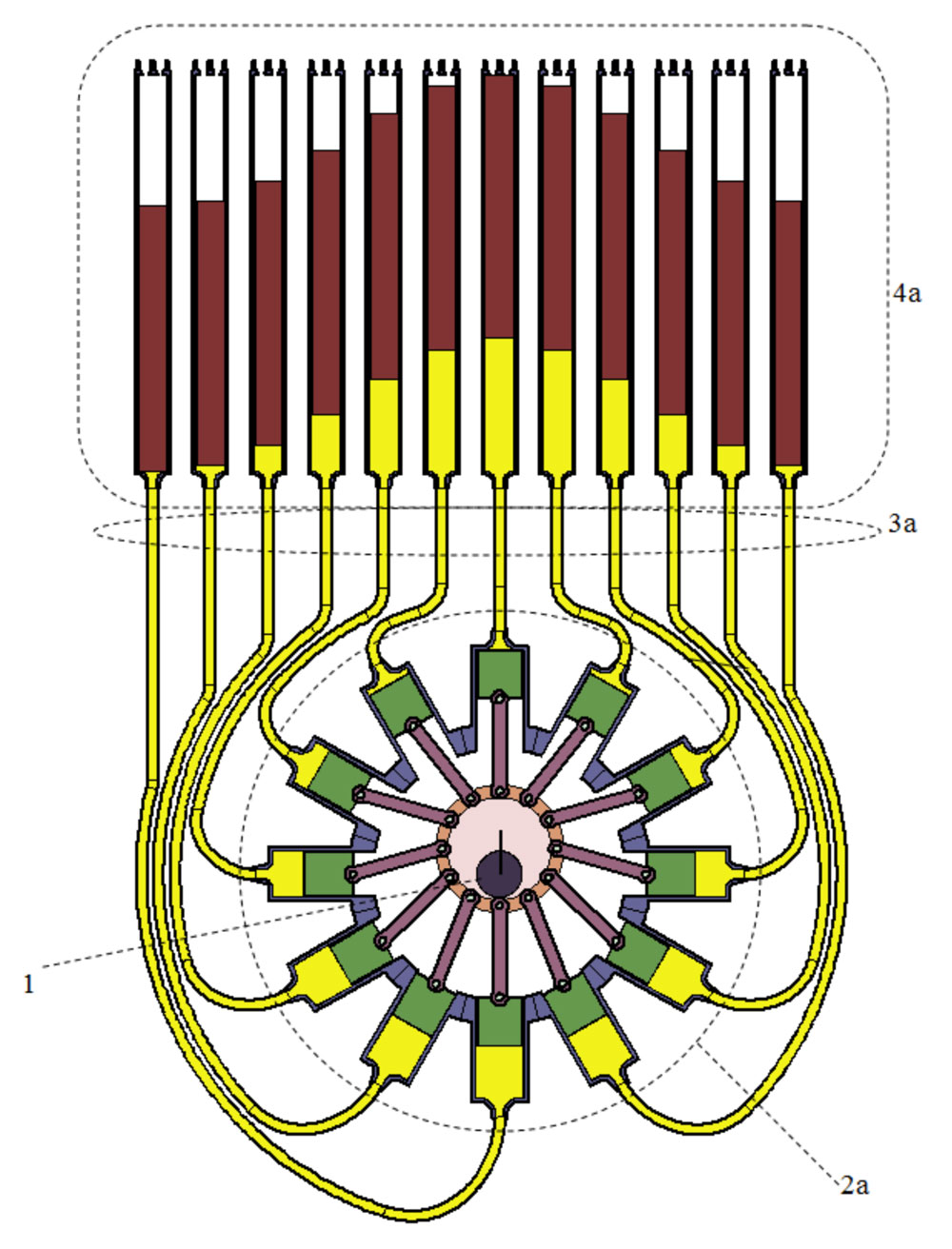WindTP transmits power by compressing a gas in one location and expanding it in another. The compressors and expanders must be extremely efficient for this application. Indeed, they must be among the most efficient compressors/expanders in the world. This sounds less challenging than it is.
The first point to note is that a single mechanical design can serve as primary compressor, secondary compressor and expander. In onshore implementations, a group of 7 primary compressors is complemented by a single secondary compressor and a single expander. The primary compressors are necessarily very slow-speed machines since they are direct-drive. For example, a typical 3MW wind turbine turns at ~16-18 rpm. The secondary compressor and expander can be designed to run, say, 12 times faster than the primary compressors so that (virtually) the same mechanical design of machine could handle 12 times the power and still turn at only ~192-216 rpm (3.2 – 3.6 times per second). These are still relatively slow-speed machines.

A multi-stage liquid-piston compressor/expander

A single stage of the liquid-piston compressor/expander
For offshore implementations, it is more likely that every primary compressor will have one dedicated secondary compressor and expander. In this case, the basic technology would be the same for all three machines but the secondary compressor and the expander would be substantially smaller and might turn 20 times faster than the primary compressors.
Note that most compressor manufacturers know perfectly well how they could make their machines more efficient but elect not to do that because the costs would necessarily rise and although the customers for these machines do value efficiency, they are generally also very sensitive to capital costs.
WindTP can afford to use quite an expensive format for its compressor and expander machinery for two reasons:
- The combination of compressors and expander replaces more conventional transmission equipment which is already quite expensive. All high-power slow-speed machinery is highly expensive per MW of power.
- The WindTP machinery serves two functions: power transmission and energy storage. The second of these functions is especially high in value.
The natural technology for the primary compressors involves liquid piston compression. This is compatible with high-efficiency slow-speed operation. The design of the primary compressors firstly separates the compression process into four or five stages – with each stage having a relatively small pressure ratio (2.24 with four stages and 1.90 with five stages). Each stage comprises two distinct parts: a displacer part (which simply causes oil to move back and forth within certain pipes) and a converter part (which couples the oscillatory motion of the liquid oil with the opening and closing of control valves such that the working gas is compressed). This animation provides insight into the operation of any one stage of the primary compressor (file:: 12_cyl_primary_compressor. Mp4).
The valves in the primary compressor are controlled actively. This has multiple benefits of which the three most important ones are: (a) valve opening times and closing times can be timed to coincide with zero pressure difference between the gas inside the cylinder and the gas in the intake/outlet duct for that cylinder so as to minimise valve losses, (b) either the intake valve or the outlet valve can be left open for a complete cycle in any one cylinder thus reducing the load on that cylinder to (almost) zero and (c) almost exactly the same machine can be used as the primary expander just by changing the rules by which the valves are opened.
